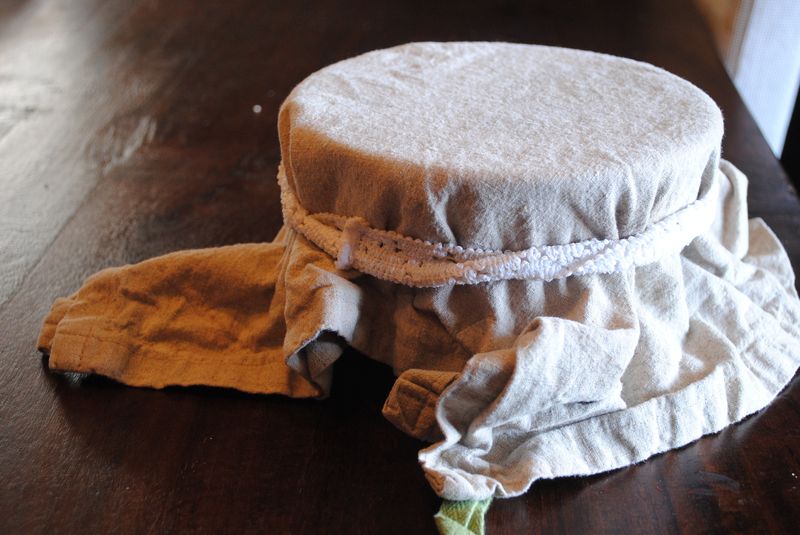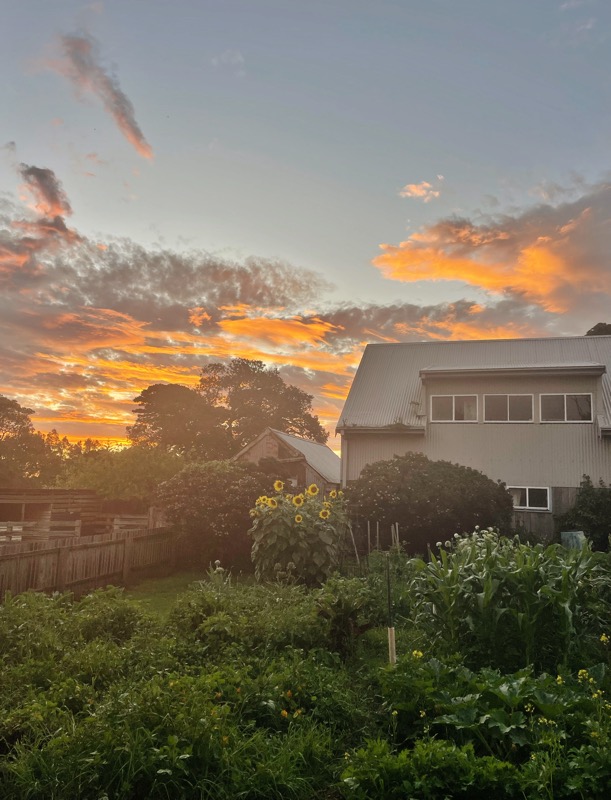
Although it's kinda magic, there is no holy mystery to making sourdough, and seriously, anyone can do it. It's just flour and water. And if you're someone who will get a buzz from having wild yeast fermenting on your benchtop, then I seriously recommend it.
I initially followed Arabella Forge's recipe from Frugavore but unfortunately my starter was dead before it started. I didn't even know what live starter looked like, I just knew there was nothing happening here.

Arabella recommends using organic rye flour, but I think that may have been my problem. I switched to unbleached plain and we were on our way. Arabella also had a slightly complicated way in which to build up the starter. Instead, on round two, I just fed it every day: a quarter cup of flour and a quarter cup filtered water.
Here's what I did.
SOURDOUGH STARTER
1. In a bowl or container, mix well a quarter cup unbleached plain flour with quarter cup filtered water.
2. The following day, add another quarter cup unbleached plain flour and quarter cup filtered water and give a good stir. Occasional bubbles should be forming on the surface.
3. For at least the next three days repeat step 2.
4. By about day six you should have very good bubble action and your starter should be ready to use. It will depend a bit on the flour you're using and the humidity or otherwise of your kitchen.
5. To keep your sourdough starter active, just keep feeding it flour and water every day. You can store it in the fridge and it will go into 'hibernation' mode. It will stay alive if you feed it once a week, but you'll need to leave it out of the fridge and feed it on the bench for a couple days before baking with it again.
6. Some recipes call for only ever using wooden spoons to mix – no metal. I used metal and it was fine.
7. Everyone seems to agree you need filtered water. This was straightforward for me as we're on tank water and only drink out of a filter jug anyway. I think some of the chemicals in town water (fluoride etc) might mess with the starter chemistry.
(starter day 2)
(starter day 4)
(starter day 5)
My starter by day five had started to smell like acetone. As in, nail polish remover. I looked it up and thoughts seemed to be to just keep feeding it, which I did (and started another starter at the same time.) The acetone smell got stronger but the bread itself kept rising every day and tasted beautiful.
I contacted Arabella (I was using her bread recipe, it's great, more on that shortly) and she gave me this fantastic answer:
"If it smells like acetone it has most likely over-fermented and the wild yeast has turned to alcohol. It is not beyond help. I would remove 3/4 of the starter and with the remainder feed it to twice its bulk with flour and water. Sourdough starters can turn alcoholic if they are not fed enough – rather than eating, they continue to ferment and become alcoholic. If you are not going to feed it and use it much, make sure you keep it in a cool place to slow down activity. I hope that helps."
Right-o then! I had already thrown out the first starter and was using my second (hence the two different bowls in the photos), which had also started to smell like acetone. For a soft flour like the one I was using, I suspect a quarter of a cup is not enough, particularly in a warm kitchen where the oven's usually on. I followed Arabella's instructions and the starter now looks like a beefed-up day 4. And smells wonderful.
I've also switched flours to a coarser organic unbleached, and we'll see how it goes.
I'll get to the bread-making next. In which flour and water (and a shake of sea salt) make a fully risen loaf.
Magic!
xxx









